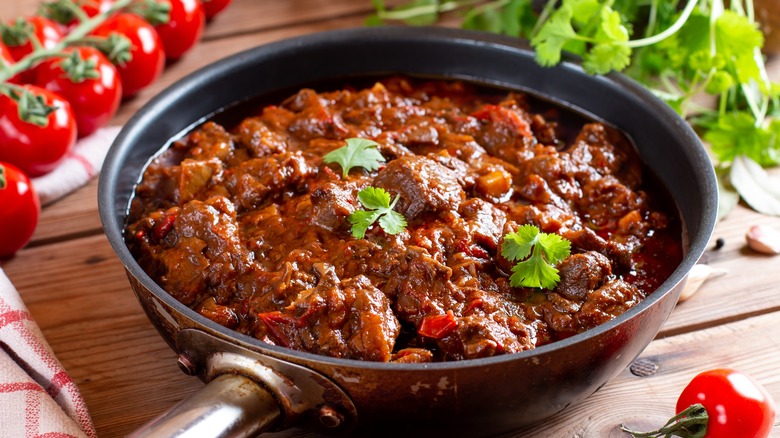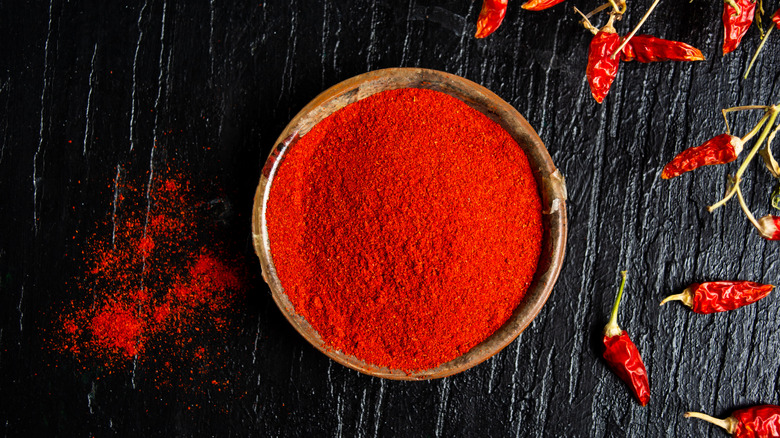The Mistake You're Making When Boosting A Dish With Paprika
In the everyday culinary realm, paprika is synonymous with iconic dishes like deviled eggs and Hungarian goulash. But paprika has plenty of exciting uses beyond those more commonly known dishes. It adds dimension to soups and stews, contributes complexity to a broth, or adds nuance to a spice rub. Paprika is so beloved in Hungary, where it happens to be the country's national spice, there's an entire museum dedicated to the stuff.
Thanks to the fact that paprika comes in multiple varieties — sweet, smoked, and spicy among them — home cooks have the opportunity to get creative when it comes to paprika-inflected preparations. Combining different versions of this versatile spice will contribute depth, and also help to balance one another within the context of your recipe. By understanding the types of paprika available to you and what flavor profiles they offer, you can start to brainstorm blends for your favorite paprika-friendly recipes.
Types of paprika
The paprika commonly found in American grocery stores is fairly mild and sweet. This "domestic" paprika is a super versatile ingredient, whether included in a glaze for chicken wings, a seasoning for homemade cheese crackers, or even infused into chocolate-based treats. It also brings that signature brilliant orange-red color to a dish and even can help emulsify flavorful vinaigrettes.
And while you can stick to a milder option, some versions of this spice contain enough capsaicin to send you in search of a glass of water. Although the variety marked "Hungarian Paprika" in the U.S. tends to be mild and sweet, there are eight different flavor profiles of paprika in Hungary and certain Hungarian varieties rival a jalapeño in their heat factor.
Spanish paprika (also known as pimentón) comes in three heat levels (sweet, bittersweet, or hot), and has a rich, smoky flavor. That's because the process by which this paprika is made requires that the pepper first be dried and smoked over a fire. From there, these peppers are ground into the powder that finds its way into many culinary applications in the region's cuisine, from paella and chorizo to patatas bravas and romesco sauce.
Blending different types of paprika
Settling on a paprika blend is a matter of preference and may require some trial and error to discover your perfect ratios. You can start with some classic recipes that already incorporate the spice and adjust from there. The classic deviled eggs you know and love may call for regular paprika, but thanks to the versatility of eggs, these bites make an ideal canvas for blending with smoky or spicy. Similarly, hummus, mac and cheese, cauliflower, and even creamy Greek yogurt welcome a sprinkle of paprika and provide platforms upon which to try out new combinations of sweet, smoky, and spicy.
And you can think beyond dinner. Instead of cayenne, reach for a mix of hot and smoky paprika to add depth to your next mug of Mexican hot chocolate. Snacks like popcorn and crunchy chickpeas are great opportunities to experiment with your paprika blends, too. There are many foods you may not realize taste better with paprika, and by sampling different combinations, you'll open up layers of flavor that promise to give about any dish a major boost.


